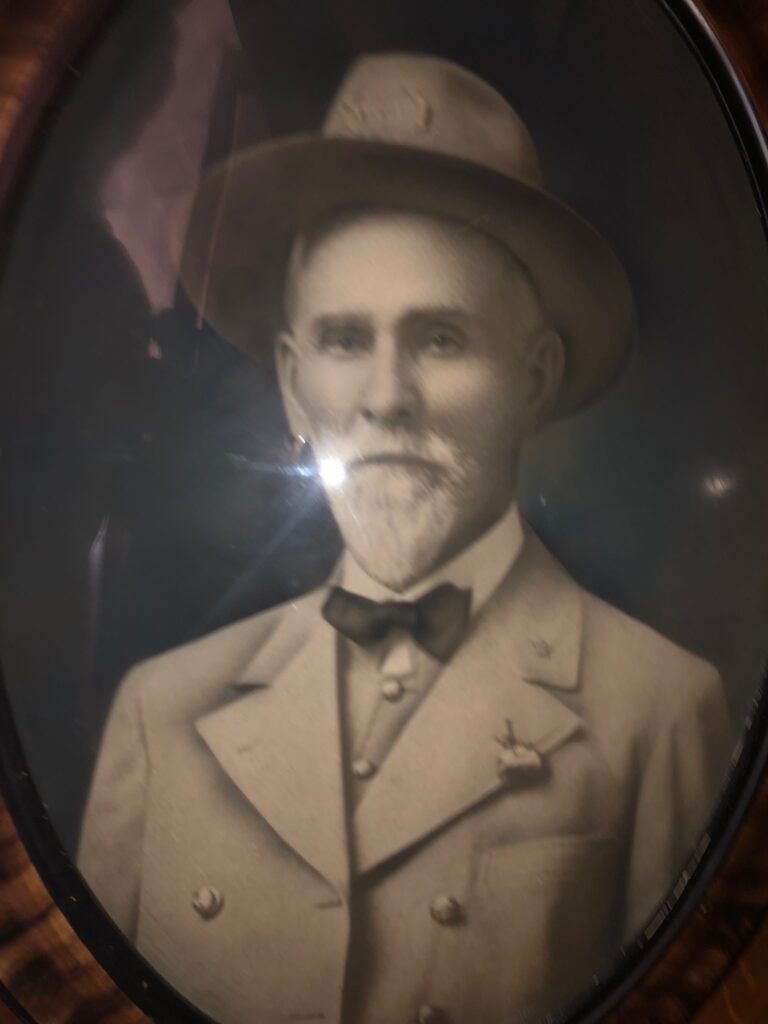
Leroy Campbell was born on October 20, 1847, on the family farm near Roanoke, Virginia. The Civil War broke out when he was 14 years old and he was a fan of the rebel cause. As soon as he was 16, he ran away to join the army. As family lore tells it, Campbell had just tried on his uniform for fit when the Yankees, on one of their many retreats through Roanoke, picked him up as a prisoner of war.
Before the retreating Yanks reached West Virginia, he escaped and made his way to the Southern army. He was assigned as a private to the Thirty-ninth Battalion of the Virginia Cavalry which was General Lee’s bodyguard. He was very proud. Young Leroy loved General Lee and was present when Lee was forced to retreat from Petersburg to Appomattox and was present when Lee surrendered.
After the war, Campbell returned home to find the family home was still standing but the rest of the plantation was in ruins. He was so filthy and covered in lice that his three sisters refused to let him in the house. They burned his beloved uniform and sent him to scrub.
The family worked hard to rebuild their lives but never recovered from the war years. In 1869, Campbell’s father died and the family lost the farm. Leroy moved to St Louis, Missouri, worked construction there for eight years then moved to California and worked farms in the Sacramento Valley.
In 1880, Campbell came to Las Animas. At first, he rode the range for John Prowers, one of the founders of Boggsville. Finally, in 1885, he purchased his own homestead near Horse Creek. The Fort Lyon Canal was being built and he was one of the first 18 farmers to take water from the new canal.
Luck was against Campbell again. Drought was rampant, hail wiped out his wheat crop and a shipment of cattle he sent to Kansas City did not even pay for its own freight charges. He was broke again.
He gave the farm to his son, moved to Fort Lyon and became an agriculturist for the naval hospital. He planted the beautiful trees that still line the road from the main gate to the hospital buildings.
Somewhere along the line, Campbell had another Confederate uniform made to replace the one his sisters burned. He always wore it on formal occasions. Whenever the Union veterans wore their blue uniforms in a parade, such as Memorial Day or the Fourth of July, Leroy marched right alongside in his gray.
Campbell was appointed to fill an unexpired term as county judge in 1912. He was popular and the citizens re-elected him in every election until he died in office in 1924. When he died, his family respected his wishes and buried him in his Confederate gray.